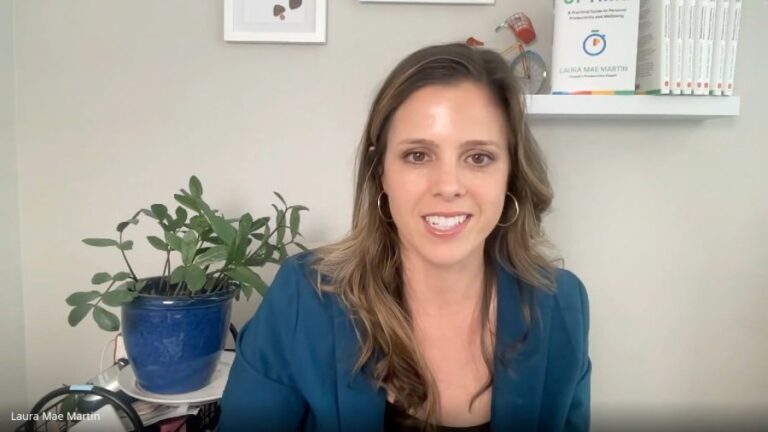Always busy at work? Back-to-back calendar meetings? That’s not a good thing!
Recently I spoke with Laura Mae Martin, Google’s Productivity Advisor and author of the new book “Uptime: A Practical Guide to Personal Productivity and Wellbeing.”
In it, Martin emphasizes the importance of prioritizing well-being, saying that it directly contributes to increased productivity.
Her first tip?
Start each day with a routine that fills your own tank, whether it’s meditating, journaling, or enjoying coffee in silence.
“One small thing, just a few minutes that carries you into the rest of your day and gives you that big energy boost before you start handing out energy everywhere else,” she explains.
Email management is a common issue. Martin recommends unsubscribing from unimportant emails, separating emails into virtual action piles, and setting up filters to flag important messages.
“Emails from your manager directly to you should look important, and you can do that by setting up filters in Gmail and attaching a red label when those emails come in. So now you’re visually prioritizing,” she explained.
This was news to me. Although I use filters in Gmail, I didn’t realize you can color code them!
Look under Labels, then tap the three dots next to one of your labels, and sure enough, there’s an option for “label color.”
You can listen to my entire interview with Laura Mae Martin by pressing play below!
[embedded content]
Another critical aspect of productivity is downtime. Martin says that research shows people are most creative during downtime, such as during workouts, commutes, or walks. I don’t know about you, but I certainly generate a lot of my best ideas during these times.
Martin suggests using something called the Swiss Cheese Method to combat procrastination on large tasks.
“You want to think about what is the smallest possible task that my brain feels excited about,” she explains. By breaking down large projects into manageable, appealing tasks, you can overcome the urge to procrastinate.
Finally, Martin explains the best way to say “no.”
She recommends providing insight into why you can’t or aren’t willing to do something, offering resources instead, or saying “not right now” if you might reconsider in the future.
“All of those are still ways of saying no, but they help you and the person who’s requesting feel a little better about it,” she concluded.


